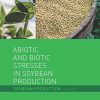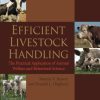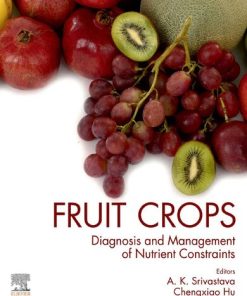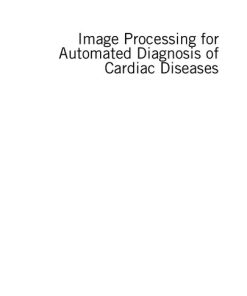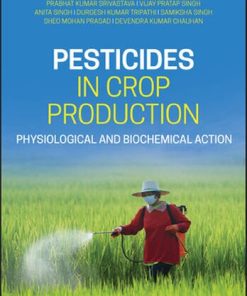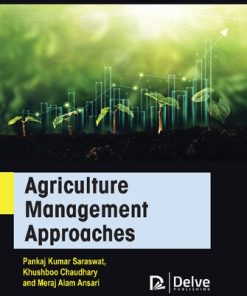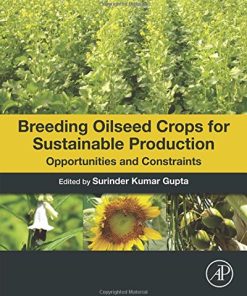(Ebook PDF) Fruit Crops Diagnosis and Management of Nutrient Constraints 1st edition by Anoop Kumar Srivastava, Chengxiao Hu 0128187263 9780128187265 full chapters
$50.00 Original price was: $50.00.$25.00Current price is: $25.00.
Fruit Crops: Diagnosis and Management of Nutrient Constraints 1st edition by Anoop Kumar Srivastava, Chengxiao Hu – Ebook PDF Instant Download/DeliveryISBN: 0128187263, 9780128187265
Full download Fruit Crops: Diagnosis and Management of Nutrient Constraints 1st edition after payment
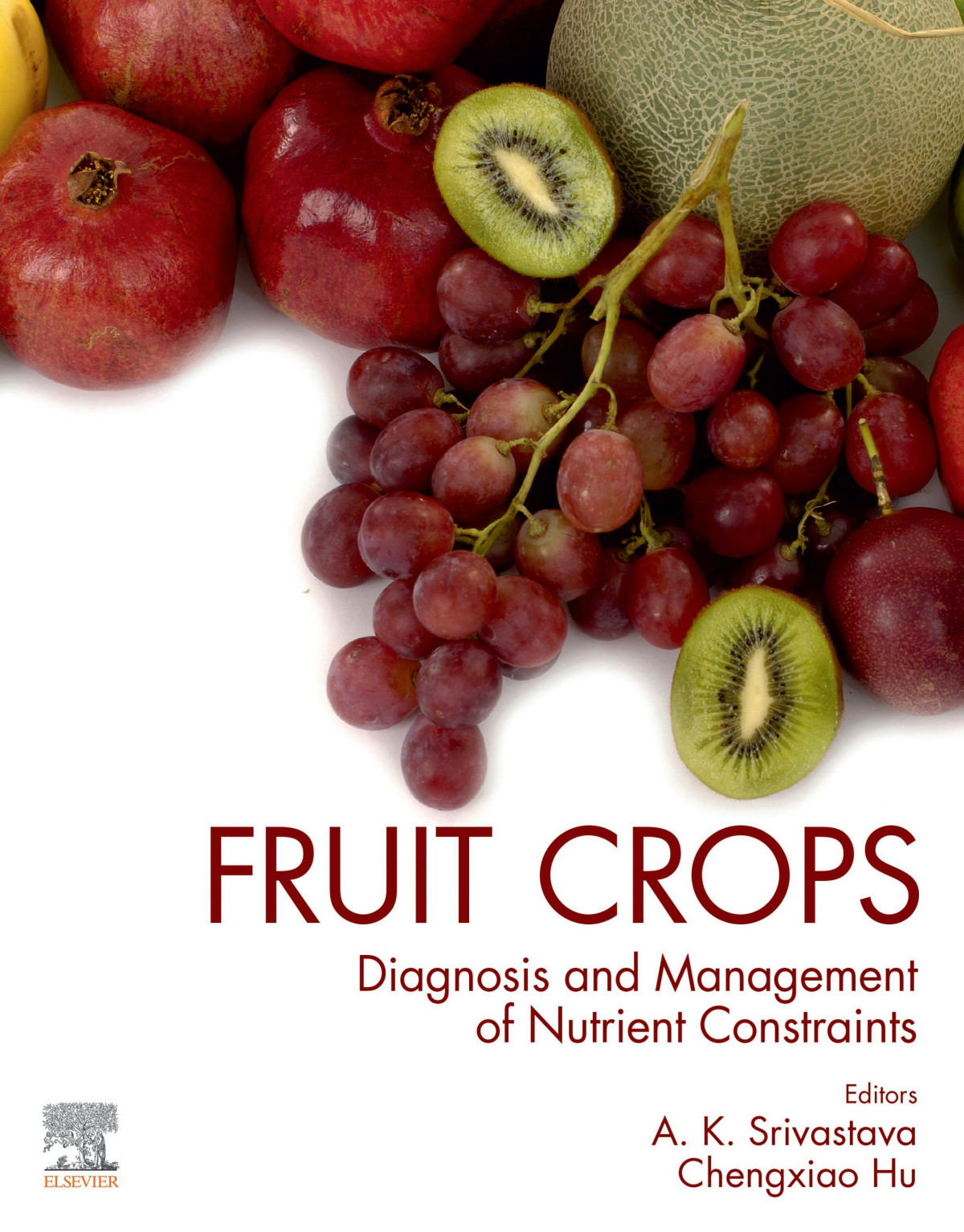
Product details:
ISBN-10 : 0128187263
ISBN-13 : 9780128187265
Author: Anoop Kumar Srivastava, Chengxiao Hu
Fruit Crops: Diagnosis and Management of Nutrient Constraints is the first and only resource to holistically relate fruits as a nutritional source for human health to the state-of-the-art methodologies currently used to diagnose and manage nutritional constraints placed on those fruits. This book explores a variety of advanced management techniques, including open field hydroponic, fertigation/bio-fertigation, the use of nano-fertilizers, sensors-based nutrient management, climate- smart integrated soil fertility management, inoculation with microbial consortium, and endophytes backed up by ecophysiology of fruit crops. These intricate issues are effectively presented, including real-world applications and future insights.
Fruit Crops: Diagnosis and Management of Nutrient Constraints 1st Table of contents:
Chapter 1: Fruits and nutritional security
Abstract
1 General
2 Fruits
3 Therapeutic benefits of fruits
4 Conclusion
5 Future perspectives
Chapter 2: Nutrient density of fruit crops as a function of soil fertility
Abstract
1 Defining nutrient density and its importance
2 Soil fertility and nutrient-dense crops
3 Future research
Chapter 3: Nutrient redistribution in fruit crops: Physiological implications
Abstract
1 Introduction
2 Nutritional requirements in fruit plants
3 Nutrient dynamics in fruit plants
4 The role of silicon in fruit plant nutrition
5 Association with microorganisms
6 Future line of research
Chapter 4: Plant nutrition and physiological disorders in fruit crops
Abstract
1 Introduction
2 Definition of physiological disorders
3 Classification of physiological disorders
4 Visual symptoms of nutrient deficiency disorders
5 Visual symptoms of some important physiological disorders
6 Causes and management of important physiological disorders
7 Future lines of research
Chapter 5: Ecophysiology of fruit crops: A glance at its impact on fruit crop productivity
Abstract
1 Introduction
2 Light
3 Temperature
4 Water
5 Wind
6 Future line of research
7 Conclusion
Chapter 6: Estimating carbon fixation in fruit crops
Abstract
1 Introduction
2 Citrus trees’ carbon sequestration capability
3 Carbon capture of long residence woody, leaf, fruit, and roots
4 Contribution of different fruit orchards to carbon storage
5 Future line of research
Chapter 7: Effects of climate change on fruit nutrition
Abstract
1 Introduction
2 Notable changes in climate for fruit nutrition
3 Effects of climate change on crops
4 Effects of climate change on fruit nutrition
5 Conclusion
6 Future research
Chapter 8: NIR spectroscopy and management of bioactive components, antioxidant activity, and macronutrients in fruits
Abstract
1 Daily fruit consumption and composition
2 Near-infrared spectroscopy
3 Chemometrics
4 Near-infrared spectroscopy measurement of fruits
5 Near-infrared scan of different fruits
6 Conclusion and future directions
Chapter 9: Role of sensors in fruit nutrition
Abstract
Acknowledgments
1 Introduction
2 Sensors based in vibrational spectroscopy
3 Data and information: Multivariate data analysis
4 Applications
5 Final considerations
Chapter 10: Omics in fruit nutrition: Concepts and application
Abstract
1 Introduction
2 Biofortified and nutritionally enhanced food crops
3 Omics
4 Transgenic fruit crops
5 Omics in nutrition
6 Future research trends and needs
7 Summary
Chapter 11: Leaf analysis as diagnostic tool for balanced fertilization in tropical fruits
Abstract
1 Introduction
2 Basic aspects of foliar diagnosis
3 Criteria for leaf sampling
4 Sampling preparation and chemical analysis
5 Leaf diagnosis of fruit trees
6 Leaf diagnosis using alternative methods
Chapter 12: Diagnosis of nutrient composition in fruit crops: Major developments
Abstract
1 Introduction
2 Diagnostic methods
3 Nutrient balances as dual or stoichiometric ratios
4 Compositional nutrient diagnosis
5 Data partitioning
6 New lines of research
Chapter 13: Floral analysis in fruit crops: A potential tool for nutrient constraints diagnosis
Abstract
1 Plant response to nutrient concentration
2 Nutrient deficiency symptom diagnosis
3 Floral analysis in fruit crops: Sampling and analysis
4 Floral analysis in fruit crops: Results interpretation and nutrient constraints diagnosis
5 Floral analysis in fruit crops: Combining use of the soil testing
Chapter 14: Calcium nutrition in fruit crops: Agronomic and physiological implications
Abstract
1 Introduction
2 Environmental factors affecting crop germination
3 Nutrient feeding of crops
4 Applications of calcium nutrition in fruit crops
5 Calcium mineral evaluation after migration in fruits
6 Nanotechnological nutrition in fruit crops
7 Foliar application
8 Plant growth responses of nanoparticles applied to soil
9 Nanoparticles and side effects applied to soil
10 Future research
Chapter 15: Boron deficiency in fruit crops
Abstract
1 Introduction
2 Chemical behavior and nature of boron
3 Factors affecting availability of boron in fruit crops
4 Sensitivity of fruit crops, boron deficiency and diseases
5 Importance of boron with reference to sink-source relationship
6 Boron functionality; Functionality (hormonal properties of boron) of boron
7 Interrelationship of boron with other nutrients
8 Anatomical (structural), physiological, and molecular response of boron
9 Response of boron to fruit yield and quality
10 Boron nutrition and shelf life of fruits
11 Future research
Chapter 16: Boron toxicity in fruit crops: Agronomic and physiological implications
Abstract
1 Introduction
2 Boron tolerance mechanism
3 Detrimental effects of B toxicity
Chapter 17: Aluminum toxicity and fruit nutrition
Abstract
Acknowledgments
1 Introduction
2 Al toxic effects on growth and structure
3 Physiological and biochemical responses of fruit trees to Al toxicity
4 Factors affecting Al tolerance of fruit trees
5 Molecular aspects of Al tolerance in fruit trees
Chapter 18: The importance of selenium in fruit nutrition
Abstract
1 Introduction
2 Selenium in soil
3 Bioavailability of selenium from soil
4 Selenium in plants
5 Selenium toxicity in plants
6 Methods of selenium determination in soil and plants
7 Effect of selenium application on yield and product quality
8 Relationship between selenium and silicon
9 Future research
Chapter 19: Importance of silicon in fruit nutrition: Agronomic and physiological implications
Abstract
Acknowledgment
1 Introduction
2 Silicon helps improve plants’ uptake of minerals
3 Silicon and improved growth and quality parameters of fruit crops
4 Silicon and control of diseases of fruit crops
5 Necessity of using silicon fertilizers
6 Future research
Chapter 20: Cover cropping for increasing fruit production and farming sustainability
Abstract
1 Introduction
2 Soil management systems
3 Impact of weed management on soil and environment
4 Tree crop nutrition and fruit yield
5 Adequacy of the soil management system to local agroecological conditions
6 Future research
Chapter 21: Rootstock: Scion combinations and nutrient uptake in grapevines
Abstract
Acknowledgments
1 Introduction
2 Characteristics of rootstocks associated with the uptake of water and nutrients
3 Rootstocks differences on the uptake of macro and micronutrients
4 Rootstocks differences in chloride (Cl), sodium (Na), and boron (B) accumulation
5 Carbohydrates and nitrogen reserves
6 Rootstock strategies to cope with salinity
Chapter 22: Microbial ecology in sustainable fruit growing: Genetic, functional, and metabolic responses
Abstract
1 Introduction
2 Soil microbial dynamics in orchard agrosystems
3 Sustainable systems versus conventional systems
4 Microbial translocation from soil to plant
5 Future perspectives
Chapter 23: Mycorrhizosphere of fruit crops: Nature and properties
Abstract
Acknowledgements
1 Introduction
2 Mycorrhizosphere
3 Mycorrhizal fungal diversity in fruit crops
4 Mycorrhizosphere roles in fruit crops
5 Mycorrhizosphere effects on soil ecology of orchards
6 Production of mycorrhizal fertilizers
7 Conclusions and outlook
Chapter 24: Mycorrhizas in fruit nutrition: Important breakthroughs
Abstract
1 Introduction
2 Facultative and obligatory mycorrhizal plants
3 Mycorrhizal dependency
4 Advantages of mycorrhizal dependency on plant
5 Mycorrhiza-dependent horticultural plant species
6 Mycorrhizae and plant nutrition
7 Contribution of mycorrhizae on P uptake and plant growth
8 Contribution of mycorrhizae on other nutrient uptake
9 Mycorrhizae and other rhizosphere organisms
10 Compatibility and collaboration of AMs with other rhizosphere microbes
11 Future aspects and concluding remarks
Chapter 25: Microbial consortia: Concept and application in fruit crop management
Abstract
Acknowledgments
1 Introduction
2 Natural consortia
3 Concept of managed consortia
4 Consortia types, approaches, and applications in agriculture
5 Applications in fruit crop management
6 Microbiome engineering
7 Conclusions and future prospects
Chapter 26: Biofertigation in fruit crops: Concept and application
Abstract
1 Introduction
2 Application
3 Crop application
4 Conclusions
Chapter 27: Nutrient management in fruit crops: An organic way
Abstract
1 Introduction
2 Soil organic matter
3 Biochar
4 Tree nutrient balance
Chapter 28: Biodynamic soil fertility management in fruit crops
Abstract
1 Introduction
2 Biodynamic approach to soil fertility
3 Do BD preparations affect soil fertility?
4 Summarized biodynamic recommendations and concluding remarks
Chapter 29: Manipulating fruit quality through foliar nutrition
Abstract
1 Introduction
2 Nitrogen (N)
3 Phosphorus (P)
4 Potassium (K)
5 Calcium (Ca)
6 Magnesium (Mg)
7 Sulfur (S)
8 Boron (B)
9 Cobalt (Co)—copper (Cu)—iron (Fe)
10 Zinc (Zn)
11 Manganese (Mn)—nickel (Ni)—selenium (Se)
12 Titanium (Ti)
13 Conclusions and future perspectives
Chapter 30: Open field hydroponics in fruit crops: Developments and challenges
Abstract
Acknowledgments
1 Introduction
2 What is new in this system
3 Implementation of the system in the field: Our experience
4 Conclusions and future research
Chapter 31: Role of biochars in soil fertility management of fruit crops
Abstract
Acknowledgments
1 Introduction
2 Biochar: Production and chemical and physical characteristics
3 Effects of biochar on the soil-plant system
4 Conclusions
Chapter 32: Physiological and molecular basis of salinity tolerance in fruit crops
Abstract
1 Introduction
2 Effects of salt stress on fruit crops
3 Response of different pathways under salinity
4 Strategies for improvement of salt tolerance
5 Conclusion and future prospects
Chapter 33: Salt stress alleviation through fertilization in fruit crops
Abstract
1 Introduction
2 Irrigation water quality
3 Fruit crops salt tolerance
4 Fertilization
5 Organic amendments
6 Conclusions
Chapter 34: Trunk nutrition in fruit crops: An overview
Abstract
1 Introduction
2 Trunk injection history
3 Factors that influence trunk injections
4 Previous studies in trunk nutrition
5 Concluding remarks
Chapter 35: Importance of nanofertilizers in fruit nutrition
Abstract
1 Fruit production and fertilizers
2 Common sources of fertilizers for fruit production
3 Use of nanofertilizers in fruit production
4 Lower loss from leaching and volatilization
5 Decrease in fixation, precipitation, or speciation in nonbioavailable forms
6 Higher growth and yield
7 Biostimulation with nanofertilizers: Stress tolerance and nutraceutical quality
8 The environmental fate of nanofertilizers
9 Future line of research
Chapter 36: 4R nutrient stewardship in fruit crops
Abstract
1 Introduction
2 Goals and performance indicators
3 The 4Rs
Chapter 37: Climate-smart integrated soil fertility management in fruit crops: An overview
Abstract
1 Introduction
2 Soil fertility and functions: Important facts
3 Fruit crops as carbon sink and response at elevated CO2
4 Nutrient removal versus nutrient requirement
5 Nutrient-microbe synergy in unlocking productivity
6 Climate resilient approach of ISFM: Our case study
7 Suggested future viewpoints
Chapter 38: Evaluation of organic versus conventional nutrient management practices in fruit crops
Abstract
Acknowledgments
1 Introduction
2 Methodology of organic versus conventional: Comparative studies
3 Conclusions
Chapter 39: Role of controlled and slow release fertilizers in fruit crop nutrition
Abstract
Acknowledgments
1 Introduction
2 Controlled- and slow-release fertilizers
3 Role of CRFs and SRFs in fruit crop production
4 Concerns of using CRFs and SRFs in fruit crop production and perspectives
Chapter 40: Diagnosis and management of nutritional constraints in berries
Abstract
1 Availability of nutrients
2 The roots and the rhizosphere
3 Strawberry (Fragaria × ananassa Duch.)
4 Highbush blueberry (Vaccinium sp.)
Strawberry
Blueberries
Chapter 41: Soil fertility: Plant nutrition vis-à-vis fruit yield and quality of stone fruits
Abstract
Acknowledgments
1 Introduction
2 Distribution, production, and importance of stone fruits
3 Short overview about importance of stone fruits
4 Soil fertility
5 Fertilization of stone fruit frees
6 Relationship of soil conditions: Nutrients
7 Stone fruit fertilization to improve yield and fruit quality
8 Conclusions and future research
Chapter 42: Diagnosis and management of nutrient constraints in papaya
Abstract
Acknowledgments
1 Introduction
2 Uses and nutritional value
3 Botany
4 Habitat
5 Growth behavior and management-related aspects
6 Diagnosis of nutrient deficiencies
7 Nutrient management
8 Conclusions and perspectives
Chapter 43: Diagnosis and management of nutrient constraints in mango
Abstract
1 Introduction
2 Nutritional value of fruit
3 Geographical distribution
4 Major cultivars
5 Physiological disorders and plant nutrition
6 Diagnosis of nutrient constraints
7 Optimum fertilizer requirement
8 Plant nutrition and shelf life of fruits
9 Future line of research
Chapter 44: Diagnosis and management of nutrient constraints in bananas (Musa spp.)
Abstract
1 Introduction
2 Classification, geographical distribution, and major cultivars
3 Biotic production constraints and yields
4 Major soil types and nutrient requirements for banana production
5 Diagnosis of banana nutrient constraints (nutrient deficiency symptoms, soil fertility norms for different Banana cultivars used globally, and leaf nutrient standards)
6 Physiological disorders due to nutritional and environmental constraints
7 Management of nutrient constraints
8 Conclusions
9 Future research
Chapter 45: Diagnosis and management of nutrient constraints in litchi
Abstract
1 Introduction
2 Nutrient concentration in litchi plant
3 Nutrient accumulation and distribution in litchi plant
4 Nutrient imbalance in litchi
5 Nutrient diagnosis in litchi
6 Nutrient management in litchi
7 Future research
Chapter 46: Diagnosis and management of nutrient constraints in pomegranate
Abstract
1 Commercial pomegranate cultivation
2 Where pomegranates grow
3 The effects of pomegranate cultivar on the cropping system
4 The pomegranate cropping system
5 Pomegranate nutrition and fertilization
6 Foliar applications
7 Future lines of research
Chapter 47: Diagnosis and management of nutrient constraints in grape
Abstract
1 Introduction
2 Major cultivars
3 Symptoms of nutrient deficiency and excess in grapevines
4 Diagnosis of nutrient content in vineyard soils
5 Diagnosis of nutrient contents in grapevines
6 Alternative methods of predicting nutritional status in grapevines (DRIS, CND)
7 Correction of acidity and fertilization in vineyards
8 Practices to increase nutrient efficiency in vineyards
9 Contamination of vineyard soils
10 Future research and considerations
Chapter 48: Diagnosis and management of nutrient constraints in guava
Abstract
1 Introduction
2 Guava production
3 Soils as growing media for guava production
4 Lime requirement, liming, and liming materials
5 Fertilization
6 Evolution of guava nutrient diagnostic methods
Chapter 49: Diagnosis and management of nutrient constraints in citrus
Abstract
1 Introduction
2 Types and main cultivars of citrus
3 Soil type of citrus-producing regions
4 Role of mineral nutrition on yield and fruit quality
5 Diagnosis of deficiency
6 Methods of fertilizer application
7 Huanglongbing
8 Balanced and constant nutrition (BCN)
9 Future research
Chapter 50: Diagnosis and management of nutrient constraints in pineapple
Abstract
1 Introduction
2 Nutritive value
3 Geographical distribution
4 Major cultivars
5 Commercial belts
6 Major soil types with taxonomical distribution
7 Soil property-fruit quality relationship
8 Diagnosis of nutrient constraints
9 Management of nutrient constraints
10 Use of sewage sludge and treated waste water on pineapple nutrition
11 Future line of research
People also search for Fruit Crops: Diagnosis and Management of Nutrient Constraints 1st:
what is fruit crops
diseases of fruit crops
list of fruit crops
explain fruit crops
fruit crops definition
Tags:
Fruit Crops,Management,Diagnosis,Nutrient Constraints,Anoop Kumar Srivastava,Chengxiao Hu
You may also like…
Biology and other natural sciences - Plants: Agriculture and Forestry
Fruit Crops: Diagnosis and Management of Nutrient Constraints 1st Edition Anoop Kumar Srivastava
Biology and other natural sciences - Plants: Agriculture and Forestry
Medicine - Neurology
Stroke: Pathophysiology, Diagnosis, And Management 7th Edition James 0323694268 9780323694261
Biology and other natural sciences - Plants: Agriculture and Forestry
Technique - Electronics: Signal Processing
Biology and other natural sciences - Plants: Agriculture and Forestry
Breeding oilseed crops for sustainable production : opportunities and constraints 1st Edition Gupta


